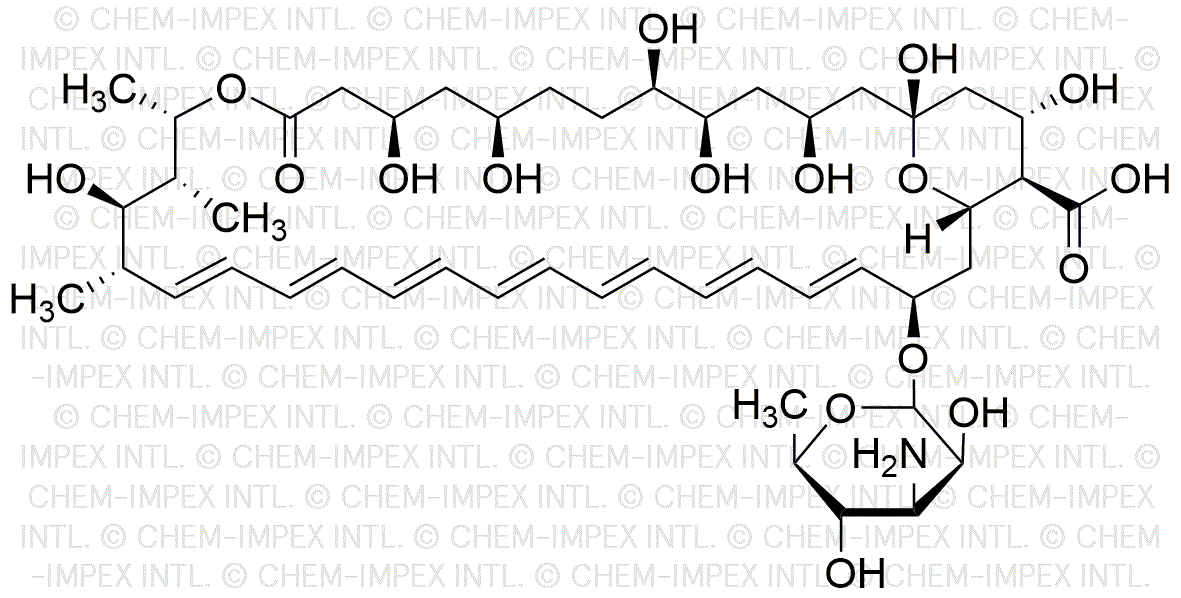Amphotericin B is widely utilized in research focused on
- Antifungal Treatment: It is primarily used to treat serious fungal infections, especially in immunocompromised patients, providing a critical option where other treatments may fail.
- Pharmaceutical Development: Researchers use it as a benchmark compound in the development of new antifungal agents, allowing for comparative studies on efficacy and safety.
- Drug Formulation: Its unique properties are leveraged in the formulation of liposomal drugs, enhancing the delivery and reducing toxicity, which is vital for patient compliance.
- Veterinary Medicine: Amphotericin B is also applied in veterinary practices to treat fungal infections in animals, ensuring broader applications in healthcare.
- Research on Drug Resistance: It serves as a key compound in studies investigating antifungal resistance mechanisms, helping to inform future therapeutic strategies.
General Information
Properties
Safety and Regulations
Applications
Amphotericin B is widely utilized in research focused on
- Antifungal Treatment: It is primarily used to treat serious fungal infections, especially in immunocompromised patients, providing a critical option where other treatments may fail.
- Pharmaceutical Development: Researchers use it as a benchmark compound in the development of new antifungal agents, allowing for comparative studies on efficacy and safety.
- Drug Formulation: Its unique properties are leveraged in the formulation of liposomal drugs, enhancing the delivery and reducing toxicity, which is vital for patient compliance.
- Veterinary Medicine: Amphotericin B is also applied in veterinary practices to treat fungal infections in animals, ensuring broader applications in healthcare.
- Research on Drug Resistance: It serves as a key compound in studies investigating antifungal resistance mechanisms, helping to inform future therapeutic strategies.
Documents
Safety Data Sheets (SDS)
The SDS provides comprehensive safety information on handling, storage, and disposal of the product.
Product Specification (PS)
The PS provides a comprehensive breakdown of the product’s properties, including chemical composition, physical state, purity, and storage requirements. It also details acceptable quality ranges and the product's intended applications.
Certificates of Analysis (COA)
Search for Certificates of Analysis (COA) by entering the products Lot Number. Lot and Batch Numbers can be found on a product’s label following the words ‘Lot’ or ‘Batch’.
Número de catálogo
Número de lote/lote
Certificates Of Origin (COO)
This COO confirms the country where the product was manufactured, and also details the materials and components used in it and whether it is derived from natural, synthetic, or other specific sources. This certificate may be required for customs, trade, and regulatory compliance.
Número de catálogo
Número de lote/lote
Safety Data Sheets (SDS)
The SDS provides comprehensive safety information on handling, storage, and disposal of the product.
DownloadProduct Specification (PS)
The PS provides a comprehensive breakdown of the product’s properties, including chemical composition, physical state, purity, and storage requirements. It also details acceptable quality ranges and the product's intended applications.
DownloadCertificates of Analysis (COA)
Search for Certificates of Analysis (COA) by entering the products Lot Number. Lot and Batch Numbers can be found on a product’s label following the words ‘Lot’ or ‘Batch’.
Número de catálogo
Número de lote/lote
Certificates Of Origin (COO)
This COO confirms the country where the product was manufactured, and also details the materials and components used in it and whether it is derived from natural, synthetic, or other specific sources. This certificate may be required for customs, trade, and regulatory compliance.


